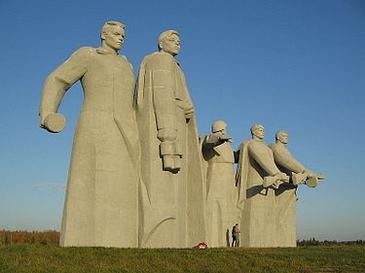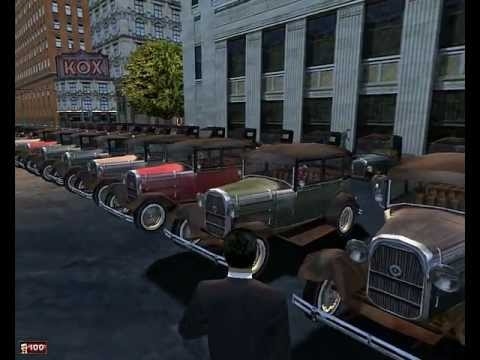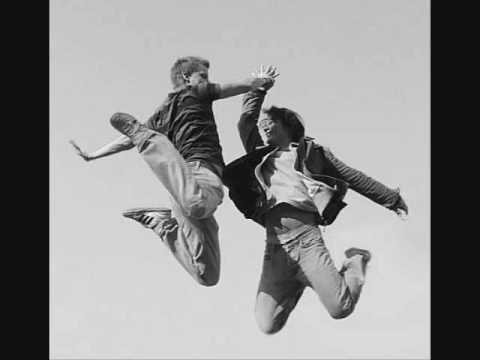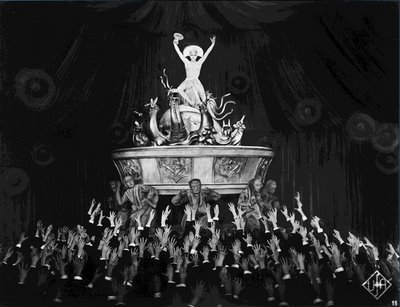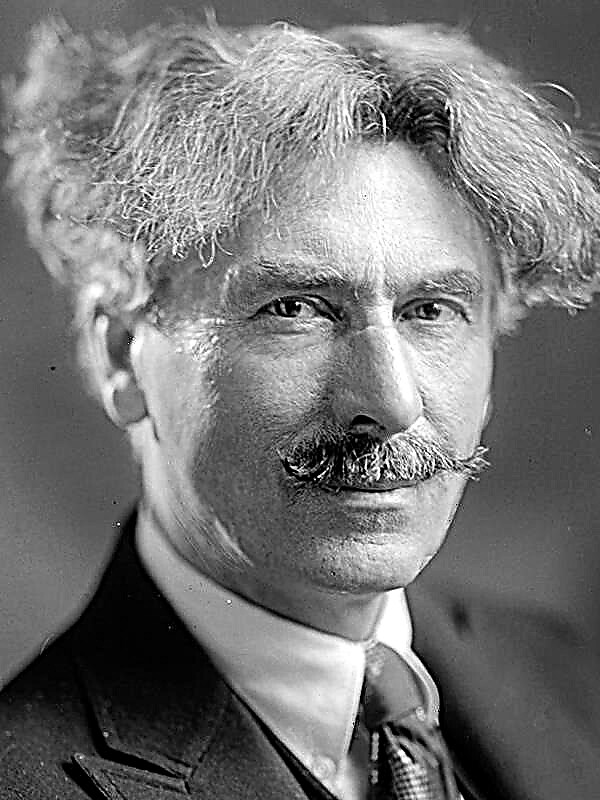Domestic journalism of the Soviet era is a single propaganda complex, the formation of which began under the conditions of the dictatorship of the Bolsheviks and the formation of a one-party press. Soviet journalism directed all its forces to maintaining the cult of the leader’s personality. Breakthroughs of the first five-year plans, achievements in the construction of socialism, democratic gains - all were credited to the incumbent leader. The press became for Stalin the very ideological and political tribune that helps to carry the ideas of Stalinism to the masses. Journalism has become an integral part of the apparatus of a totalitarian system.
1917-1925
Conventionally, all Soviet journalism can be divided into six periods. The first stage - 1917 - 1925 In the first months of Soviet power, the media system underwent major changes. From the first days, press organs brought down a lot of criticism on the Bolsheviks. The ideological line of all materials is the failure of the adventure of the Bolshevik party. Naturally, the current party could not allow such freedom of thought, therefore, on October 26, 1917, most of the major opposition newspapers were closed: Rech, Den, and others. However, the Bolsheviks did not stop there. On the same day, the Press Decree was introduced, restricting the activities of anti-government publications.
The decree caused a lot of indignation, but the current government did not slow down, but, on the contrary, strengthened the monitoring of the press. In 1918, the Revolutionary Press Tribunal opened, which subsequently closed over 460 publications. New ones took their place. For example, in 1918, under the editorship of L. S. Sosnovsky and V. A. Karpinsky, the newspaper “Poor” was published. A year later, the circulation of the publication began to exceed 500 thousand. The newspaper focused on an illiterate audience, so the materials were small, simple and popular. Since 1918, Soviet journalism was gaining momentum: the first edition appeared in the evening - “Evening Red Newspaper” (editor - V. A. Karpinsky). Subsequently, it was replaced by the newspaper Kommunar. By the end of the year 18, there were about 884 Bolshevik newspapers.
Despite the disappointing beginning, journalism in the early years of Soviet power was a very productive period. Indeed, in 1918 a significant event took place: the Russian Telegraph Agency was created. In the future, thanks to GROWTH, a new genre emerged - wall newspapers.
Radio did not lag behind in development. So, the first radio message contained the appeal of V.I. Lenin “To the citizens of Russia”. The victory of the October Revolution was announced in it. By the year 18, there were already about a hundred radio stations. Since 1924, began regular broadcasts of the Moscow radio station. A.S. Popov and the radio station.Kominterna. In addition, the first issue of RosTA Radio News was published. Radio was under the strict control of the Radio Commission, which carried out the ideological management of broadcasting. Any material was censored.
1926-1940
The second period in the history of Soviet journalism originates in 1926 and ends in 1940. The stage is characterized by the growing influence of the party on the media. The current government inspired the heads of the press and radio the idea that the priority task of journalism was the communist education of workers and the introduction of the traditions of the ruling party into the masses. Ten years later, in 1938, party control of censorship bodies throughout the USSR was subjected to: 8850 newspapers, 1762 magazines, 74 broadcast radio stations, 1176 printing houses, 70 thousand libraries.
Since 1928, there has been a trend towards a rapid increase in the number of print publications. If in the first year of the new period there were about 2,000 newspapers, then by 1940 there were already more than 9,000. The Pravda newspaper, the circulation of which reached 2 million copies, was the most popular. The second and third positions were shared by Izvestia and Peasant Newspaper.
Among the comparatively new all-union publications, one can mention the Literary Newspaper. The newspaper published essays by P. Pavlenko, A. Karavaeva, V. Kataev, and Shishkov. Actively spoke in the newspaper A.M. Bitter. Publishing his articles “Conversation with the Young” and “On the Language”, the editors noted that “the struggle for the culture of the language is a struggle for the culture of socialism”.
Before the start of the war, industry and production publications: Oil, Technique, Medical Worker and others differed in particular growth. The work of journalists on a narrow category of citizens was perfected.
At the same time, the development of broadcasting was going on. By 1940, the number of radio newspapers reached almost 300. The radio system radically changed in 1930 with the advent of sound recordings. Radio broadcasting increased territorial coverage and by the end of the second period there were 5 million radio points in the country.
The second stage in the history of the development of Soviet journalism is also notable for the fact that in 1931 the first experimental television program took place in the USSR. It is this event that gives reason to talk about the emergence of Soviet TV, which by the end of the 30s was conducting relatively regular television programs.
If we consider the main thematic line of journalism in the pre-war period, we can talk about a clear passion for the economy and propaganda of the achievements of the USSR: the annals of new buildings, the victory of pilots, educational program, collectivization. Radio and TV in Russia was originally created exclusively for the implementation of communist ideas in the widest sections of the population.
1941-1945
The third period is connected with the Great Patriotic War. From 1941 to 1945 Soviet journalism was in an extremely difficult situation. During the war years, the domestic press became the indispensable tool capable of convincing society and mobilizing it for a feat. The best journalists of the country wrote about the merits of warriors, love for the Fatherland and courage of the common people.
The entire media system was rebuilt during the war years. The leading position was occupied by broadcasting. Since the appearance of the Sovinformburo, people have listened daily to reports on the situation on the fronts. Any citizen knew the name of the main announcer Yuri Levitan. For many years he became the voice of war.
Military departments appeared in newspapers and on the radio. The main topic of journalism was the exposure of the cunning intentions of the enemy. Newspaper business has changed dramatically: the number of central newspapers has decreased, and new front-line publications have appeared. So, for example, the Krasnaya Zvezda newspaper began to be published. In it, with the outbreak of war, the works of famous writers were published: Konstantin Simonov, Alexei Tolstoy, Ilya Erenburg and others. Specialized publications for the navy, aviation and partisans arose.
The war years vividly transformed the genre diversity of the national press. Materials appeared such as front-line letters, pamphlets, caricatures, and feuilleton. Specialized satirical publications were published: Frontline Humor, Skvoznyak and others. All journalism was aimed at convincing the inevitability of our victory. This instilled in people faith and hope for the future.
1946-1956
The next post-war decade (1946 - 1956) was marked by victory over fascism. However, the damage done to the country by the war was enormous. The economy was in decline, the economy was destroyed, there was a catastrophic shortage of male labor. All these circumstances created difficult conditions for journalists who subordinated all their creative activity to the interests of Soviet propaganda. The media in every way motivated people to work, new exploits and accomplishments.
The pre-war press system was gradually recovering. In addition, television broadcasting was resumed. In 1951, daily broadcasting began in Moscow.
The share of broadcasting has also increased rapidly. The party did its best to limit the broadcasting of foreign stations. The jamming of western frequencies escalated in 1946 with the outbreak of the Cold War. Thus, the government fought for unity of mind, trying to promote the Soviet way of life.
The main feature of this period was the implausibility of the press. The media embellished reality, idealized the heroes of the works, because the party set a special task for journalists, to show prosperity and stability. Journalism was in the strict framework of ideological consistency, so there was no place for free-thinking and opposition publications. But the number of newspapers did not decrease, as new ones began to appear that met the party’s ideological goals: “Building materials industry”, “For lasting peace, for popular democracy”, “Problems of peace and socialism”.
1956-1985
The turning point in the history of Soviet journalism came in 1956, when the 20th Congress of the CPSU took place. The transition from the era of the Stalin personality cult to the era of the free construction of communism has opened up new opportunities for journalism. Khrushchev's “thaw” changed the media theme: the press came closer to reality, previously unacceptable ideas began to be expressed. Among newspapers, these trends are most noticeable in the newspapers Pravda and Izvestia. A large role in this process was played by “thick” magazines - first of all, “New World” led by A. Twardowski.
However, in the early 80s, freedom of journalism came to naught. The era of stagnation has come. The authorities sought to show the advantage of the USSR over the West, therefore, the press, as the main tool for influencing the minds, was obliged to subordinate its activities to this idea. A campaign to show the "good hero" was born.
There was a struggle against dissent, but this did not prevent the official press from filling up with forbidden works that illegally reproduced and were published.
The television of that time was no different in theme from the newspapers, because even the entertaining content bore an ideological imprint. TV channels sacredly performed the task of educating a new person. A similar task was performed by the radio, which continued to develop actively in spite of all the circumstances. Due to the fact that portable radios appeared, Soviet citizens could listen to foreign radio stations. In order to combat foreign interference, the authorities jammed the western stations, but people continued to listen to “subversive” stations like “Freedom”, “Free Europe” and others, because they could provide objective information about the current state of affairs.
1986-1991
The last stage in the formation of journalism in the USSR began with the advent of M.S. Gorbachev. Political and economic difficulties and growing contradictions led to the inevitability of a change in the existing course of politics. Journalism has undoubtedly become the centerpiece of the ongoing restructuring.
The media of this period received freedom of speech. Now nothing was silent. All problems were brought to the judgment of the people. The campaign to promote “socialism with a human face” was a priority for the media. They informed readers about the situation on the world stage, for example, Western politicians appeared on television screens.
Among the progressive were the newspapers Izvestia, Komsomolskaya Pravda, and the magazine Ogonyok. Thick magazines also supported the idea of "perestroika." In the late 80s and early 90s, Radio Russia was born. From this moment on, one can talk about the emergence of free and independent journalism in Russia.


